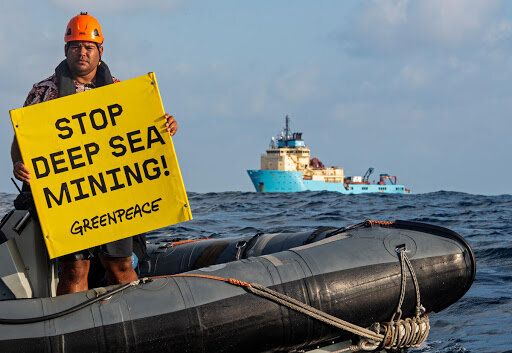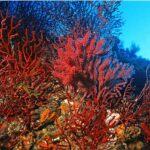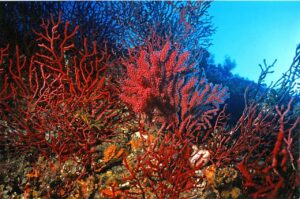What is Deep Sea Mining?

Humankind knows more about space than our oceans. Its deep waters are filled with mystery, minerals, and commercial interests, driving curiosity within the international community.
The development of technology relies on mining minerals, such as cobalt, coltan, iron, zinc, copper, nickel, titanium, lead, iron, magnesium, and silver, all quasi exhausted in land minefields through child labor and colonial practices. Due to the human exhaustion of terrestrial mining, nations and private corporations are exploring the tempting practice of mining international waters’ seabeds.
The International Seabed Authority, located in Jamaica, funded by the United Nations, controls and patrols 50% of the world’s seabed to regulate human activity. Private entities and states can request to explore seabeds and their mineral deposits through this UN agency. As attending ISA meetings in Jamaica is very expensive, the only member states that partake are rich nations such as Canada, France, Russia, China, and the United States, all with commercial interests in deep-sea mining.
The three main commercial interests are:
- Polymetallic Nodules, which are buried in fine-grain sediments. One of the highest densities of polymetallic nodules is located in the Clarion-Clipperton Zone (Kiribati, French Polynesia, Cook Islands) in the Eastern Pacific. Studies suggest that this sediment contains more Nickle, Magnesium, and cobalt than all terrestrial resources combined. Polymetallic nodules are used in the development of electric vehicles.
- Polymetallic Sulphides have formed thousands of years ago through hydrothermal activity. They are referred to as “black smokers,” which are active hydrothermal vents that form unique ecosystems by creating bacteria that serve as a food source to marine creatures. Polymetallic Sulphides contain copper, iron, zinc, silver, and gold.
- Cobalt Crusts are found at 400-7,000 meters deep at the flanks and tops of seamounts. The most prospective area for cobalt crusts is the Magellan Seamounts in the Pacific Ocean, east of Japan, and the Mariana Islands. Cobalt is used in all electrical and electronic devices.
When did it become a common interest?
In the 1960s, during the verge of a metal price crisis, the geologist John L. Mereo proposed exploring and exploiting the various and unique minerals in the seabeds of international waters. In response, the Maitan Ambassador, Arrid Pardo, told the UN that these explorations are challenging in practice to achieve and besides, it presents a massive threat to humanity and the environment. As a response, the United Nations created the previously mentioned International Seabed Authority to regulate human activity, preventing states from monopolizing the natural resources found in seabeds.
Currently, nations are exploring the idea due to the current economic crises, using it as a scapegoat for developing countries to provide their land at a meager price for exploitation. By having an intermediary authority, companies are persuading the environmental community that their activity will be monitored, controlled, and done under a set of rules that will cause no harm.
So far these countries have been approved contracts from ISA:China, France, Germany, India, Japan, Russia and South Korea and private held companies from Canada, US , UK and Belgium.
In 2019 Canadian company nautilus failed in its deep sea mining exploration in Papua New Guinea… It seems that China is now winning the deep sea mining race.
Why should we care?

The deep sea is so unexplored that it is impossible to imagine what factors need to be considered whilst mining Companies have already thought of a methodology that looks pretty intruding to the environment and an inexperienced tactic that might produce negative results for marine habitats. The method consists of a collector vehicle that will contact the seafloor and collect the mineral deposit by cutting and breaking the mineral deposits from the substrate. This methodology can result in oil spills, destructions of marine habitats, carbon emissions, burning of fossil fuels, and unavoidable mistakes due to the ignorance of what is beyond the sea.
Human activity has already exhausted terrestrial natural resources; why should we repeatedly repeat the same mistakes? Haven’t we learned anything? Deep-sea mining is dangerous both for humanity and ocean life.
What can we do? Firstly, you can sign these petitions, asking to prohibit deep-sea mining.

Secondly, since most of these minerals are used for technological development, as a community and consumers, we can ask and pressure tech companies to reuse the minerals of old electronics as a renewable source for technological progress. In today’s world, progress can only be achieved through sustainable practices, and deep-sea mining is not a viable source.













